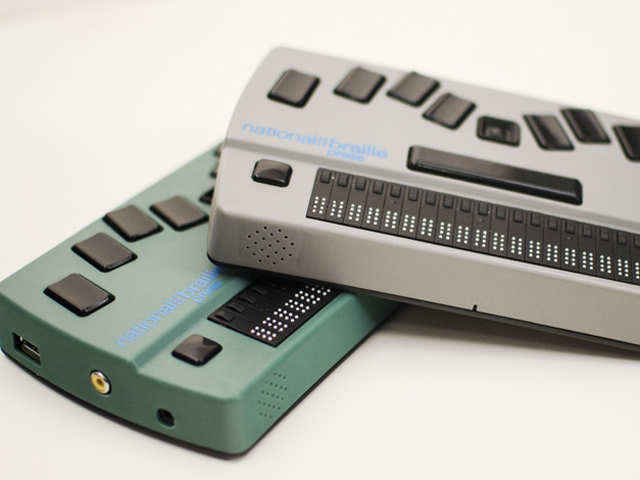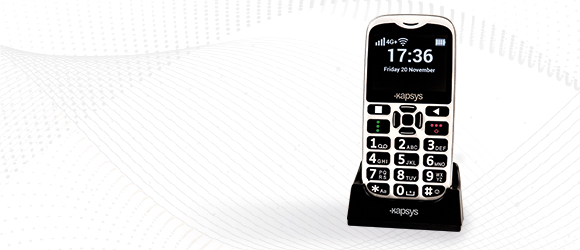Screen Readers for the Blind: Accessing Content Without Barriers
Screen Readers for the Blind: Accessing Content Without Barriers
Blog Article
Empowering Self-reliance With Assistive Technology for the Blind
The combination of assistive innovation right into the lives of individuals with visual impairments stands for a significant development in advertising freedom and self-sufficiency. From cutting-edge display visitors to sophisticated smart canes, these devices not only boost everyday navigation and communication but also encourage customers to engage meaningfully in numerous elements of life. As we discover the myriad advantages and real-world applications of these modern technologies, it ends up being crucial to take a look at the underlying variables that add to their performance and the possibility for future growths in this vital field.
Review of Assistive Innovation

The development of assistive technology is grounded in concepts of inclusivity and empowerment. Innovations in software program, equipment, and sensory improvements offer individuals with options tailored to their specific requirements. From display visitors that transform message to speech, to responsive gadgets that convey information via touch, these devices transform the means individuals engage with their surroundings.
In enhancement to sensible applications, assistive modern technology cultivates higher social incorporation and engagement in numerous fields, including education and employment (Screen readers for the blind). As r & d remain to evolve, the potential for assistive innovation to even more improve the lives of aesthetically impaired people stays appealing, paving the method for a much more equitable society where every person can thrive
Kinds Of Assistive Instruments
A range of assistive gadgets have emerged to sustain individuals with aesthetic impairments, each created to fulfill details requirements and enhance everyday functioning. These devices range from low-tech services to modern innovations, providing diverse alternatives for customers.
Low-tech devices include magnifiers and large-print materials that aid in analysis and writing. Braille devices, such as Braille stylus pens and slates, make it possible for responsive analysis and communication. Alignment and flexibility help, like white walking sticks, aid individuals browse their atmosphere securely.
On the greater end of the spectrum, digital zoom systems and screen readers use substantial support. Electronic magnifiers enable individuals to increase the size of message and photos on screens, while screen viewers transform digital web content right into synthesized speech, facilitating accessibility to details on computers and smartphones.
Mobile phone applications also play an essential function, offering attributes like message acknowledgment and navigating help. Wearable technology, such as clever glasses furnished with increased truth, is arising as a promising tool to boost situational understanding.
Advantages of Assistive Modern Technology
The integration of assistive innovation significantly enhances the high quality of life for people with aesthetic impairments. These technologies empower individuals by advertising independence, allowing them to browse their environments extra efficiently and execute day-to-day jobs with greater convenience. Display readers and magnification software application allow people to accessibility digital information, cultivating expert and academic possibilities that might have formerly been out of reach.
In addition, More Help assistive tools such as clever walking canes and general practitioners applications give real-time navigation support, boosting mobility and safety. This boosted freedom not only boosts self-confidence however likewise encourages social involvement, allowing customers to take part even more totally in their areas.
Assistive modern technology additionally facilitates interaction, assisting individuals connect with others through voice acknowledgment and text-to-speech applications. This capacity is essential for preserving relationships and accessing vital details.
Furthermore, the customization choices readily available with several assistive modern technologies make sure that customers can tailor devices to their details needs, additionally boosting usability and performance. On the whole, the benefits of assistive modern technology for people with aesthetic disabilities are profound, advertising a much more inclusive culture where every person can pursue their goals and goals.
Situation Research Studies and Success Stories
Highlighting the transformative influence of assistive technology, numerous study highlight how individuals with visual impairments have actually efficiently integrated these tools right into their day-to-days live. One compelling instance involves an university student that made use of screen analysis software program to navigate academic materials and online resources properly. This innovation not only promoted her education yet also boosted her self-confidence in participating in conversations and group jobs.
One more situation research features a professional that employs a mobile phone application made for navigating and object acknowledgment. By utilizing this app, he has actually regained autonomy in both his individual and workplace, allowing him to commute independently and involve my review here with coworkers extra effectively.
Furthermore, a retired jennie glasses person shared her experience with braille e-readers, which allowed her to access a large array of literature and remain connected with her neighborhood with publication clubs.
These success tales underscore the crucial function of assistive technology in fostering self-reliance, enhancing quality of life, and promoting social assimilation for individuals with aesthetic impairments (Assistive technology for the blind). By accepting these innovative devices, individuals can overcome difficulties and confiscate chances that add to their expert and individual fulfillment

Future Patterns in Assistive Technology
Advancement in assistive technology is positioned to redefine the landscape of support for people with aesthetic impairments. Arising patterns emphasize the assimilation of expert system (AI) and artificial intelligence, which improve the performance of gadgets that aid with navigating and information access. AI-driven applications are now capable of analyzing visual information in real-time, enabling individuals to involve with their atmosphere much more individually.
Moreover, the advancement of wearable innovation is advancing rapidly. Smart glasses furnished with enhanced fact (AR) can offer audio summaries of environments, changing exactly how users connect with public rooms. These devices not just promote freedom yet additionally foster social inclusion.
Furthermore, the Internet of Points (IoT) is making homes smarter, permitting for smooth connectivity between daily devices and assistive gadgets. This connectivity empowers users by making it possible for computerized reactions and voice-activated controls tailored to specific demands.
Verdict
In final thought, assistive technology plays a pivotal role in encouraging individuals with visual problems by improving their independence and involvement with their surroundings. The varied variety of applications and devices offered not only helps with navigation and interaction however also promotes social assimilation and chances for professional and individual development. As advancements proceed in this field, the possibility for boosting the top quality of life for those with visual problems will increase, promoting greater autonomy and empowerment.

Report this page